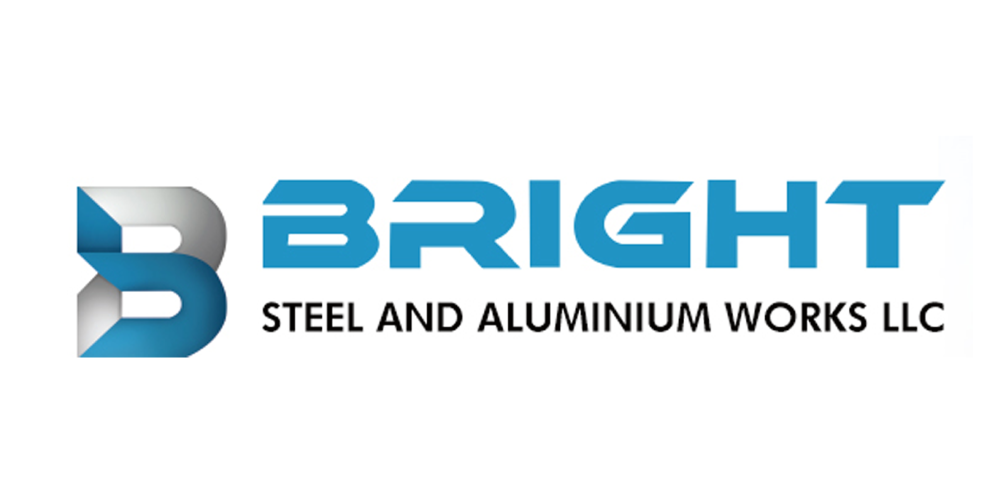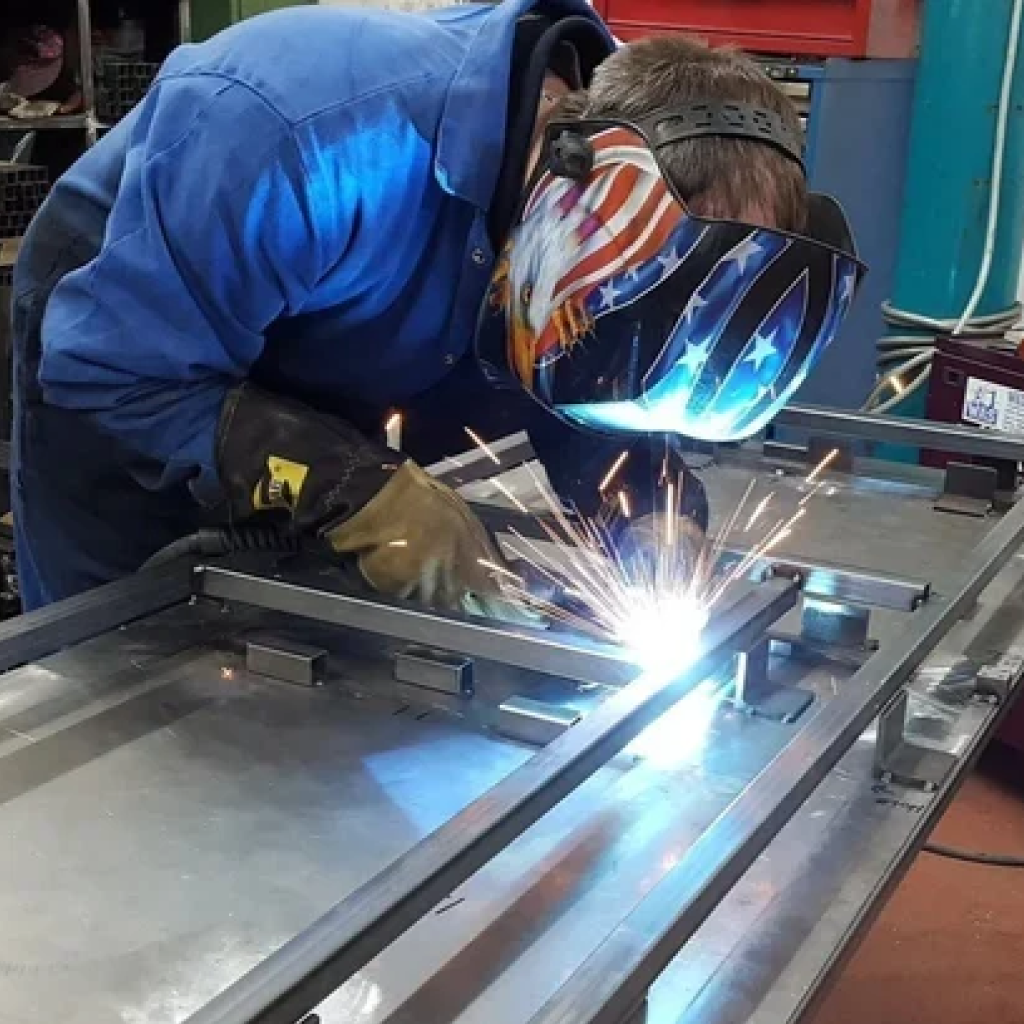Bright Steel And Aluminium Works
Bright Steel And Aluminium Works

People call it stainless, but that’s not quite right. “Stain-resistant” would be more accurate. When discussing Stainless Steel Fabrication with clients, this is often the first misconception that needs clarification.
Nothing in metalworking is truly stainless. Leave 316 marine-grade out in the salt spray long enough and even it will show signs of corrosion. But compared to regular carbon steel that rusts if you look at it wrong? Stainless is practically magical.
Let’s talk about what really happens in stainless steel fabrication. Not the sanitized version you get from most websites.

Stainless steel fabrication doesn’t want to be cut. The material work-hardens as you cut it, meaning it gets tougher the more you work it. This creates unique challenges.
Laser cutting? Great for precision work, but the beam gets reflected by the shiny surface unless your operator knows what they’re doing. Power settings that work perfectly for mild steel will either not penetrate or blow massive holes in stainless unless properly adjusted.
Waterjet operators hate cutting stainless sheet thinner than 1/8″ – it warps from the water pressure unless perfectly supported. They won’t tell you this when quoting your job, but you’ll see the consequences when parts arrive distorted.
Plasma cutting leaves a terrible edge quality on stainless compared to carbon steel. The dross (that’s the resolidified metal that sticks to the bottom edge) clings more tenaciously to stainless and often requires secondary grinding operations to remove.
The old-timers in fabrication shops have tricks they won’t teach the new guys right away. Like using masking tape along cut lines to reduce burr formation. Or spraying WD-40 on bandsaw blades when cutting thick stainless to improve surface finish.
Bending stainless requires about 50% more tonnage than mild steel of the same thickness. But that’s not all – the springback is dramatically different. What’s springback? The tendency of metal to partially return to its original shape after bending.
Press brake operators have to overbend stainless significantly compared to carbon steel. A 90-degree bend might require setting the machine to 98 degrees to compensate for springback. Get it wrong, and you’re scrapping expensive material.
Material grain direction matters enormously when bending stainless. Bend with the grain, and you might get away with a tighter radius. Bend against it, and you’re asking for cracks. Good fabricators always mark and track grain direction throughout the process.
The minimum bend radius chart your engineer downloaded from the internet? Throw it away. Real-world bending depends on the exact material composition, equipment condition, tooling setup, and operator skill. There’s as much art as science here.
Welding stainless properly is a specialized skill. The basics seem similar to welding mild steel, but the differences will bite you:
Heat control becomes critical with stainless. The material conducts heat poorly compared to carbon steel (about 1/3 the thermal conductivity). This means heat concentrates at the weld zone instead of dissipating. Warping happens fast, and undoing it? Nearly impossible.
That rainbow discoloration around stainless welds? That’s chromium depletion – the very thing that gives stainless its corrosion resistance is being compromised. Proper gas shielding (both front and back purging on tubes) prevents this, but many shops cut corners here.
Filler metal selection isn’t just about matching the base material. A good welding engineer considers the service environment, mechanical requirements, and metallurgical compatibility. Using 308L filler on 304 base material is standard, but specialist applications might need something exotic like 312 or 309L for dissimilar metal joints.
Welders develop techniques they guard jealously. The slight wrist motion that keeps the puddle flowing perfectly. The exact amount of wire stick-out that produces optimal results. These aren’t things you learn from books – they come from thousands of hours of practice.
Raw stainless welds and fabrications look terrible. The finishing process transforms them into something worth showing.
Grinding stainless requires completely different abrasives than carbon steel. Use the wrong wheel, and you’ll embed carbon particles that later rust and stain the surface. That’s why serious shops have dedicated stainless-only tools.
The standard “#4 finish” isn’t standardized at all. What passes for #4 finish varies widely between fabricators. One shop’s stainless will have visible grit lines around 120-grit, while another’s will be much finer at 180 or 220-grit. Never assume finish consistency between suppliers.
The standard “#4 finish” isn’t standardized at all. What passes for #4 finish varies widely between fabricators. One shop’s stainless will have visible grit lines around 120-grit, while another’s will be much finer at 180 or 220-grit. Never assume finish consistency between suppliers.
Electropolishing remains the gold standard for critical applications. The process actually removes a microscopic layer of metal, preferentially dissolving peaks before valleys. The result is smoother than mechanical polishing could ever achieve. This matters enormously for pharmaceutical and semiconductor applications where even microscopic crevices could harbor contamination.
Passivation isn’t optional for quality work – it’s mandatory. The chemical process removes free iron from the surface and enhances the chromium oxide layer. Skipping this step leaves stainless vulnerable to flash rusting and long-term corrosion issues. Unfortunately, many shops consider it an “extra” because it’s not visually detectable.
Architecture seems obvious – those gleaming skyscrapers wouldn’t keep gleaming without stainless cladding. But designers sometimes specify it poorly.
The Millennium Bridge in London used the wrong grade of fasteners initially. They looked identical to the correct specification but lacked proper corrosion resistance. The result? Costly replacements after rust stains started appearing on the iconic structure.
Commercial kitchens rely on stainless not just for ease of cleaning but because health departments mandate it. The non-porous surface prevents bacterial growth in ways that other materials can’t match. But the cheapest NSF-rated equipment uses thinner gauge material that dents easily and doesn’t last.
Breweries and wineries depend entirely on stainless for product contact. Even a small amount of copper can catalyze oxidation reactions that ruin flavor. Proper sanitary welding with smooth internal beads prevents product accumulation during cleaning cycles. It’s not about appearance – it’s about functionality.
Coastal construction increasingly specifies stainless structural components as a defense against climate change. Rising sea levels and more intense storms increase salt exposure for structures previously considered “safe” from marine environments. The additional material cost often pays for itself within a decade through reduced maintenance.
Quality stainless fabrication carries a premium price for good reason. The knowledge, equipment, and processes required for excellence don’t come cheap.
Visit potential fabricators in person. Look at their material storage – is stainless kept separated from carbon steel? Check their tools – are there dedicated stainless-only grinders and brushes? Ask about their passivation process – do they include it standard or treat it as an add-on?
Material traceability matters enormously. Can they provide mill certificates tracing your material back to its source? In critical applications like pressure vessels or structural components, this documentation isn’t optional – it’s essential for liability protection.
Don’t be fooled by fancy equipment. A skilled fabricator with basic tools will outperform an amateur with state-of-the-art machinery every time. Ask to meet the people who will actually build your project, not just the sales team.
Among UAE fabricators, Bright Steel has established a reputation for quality work. Their approach emphasizes material knowledge and process control throughout fabrication.
Their facility maintains strict material segregation protocols, preventing cross-contamination that leads to surface rusting. Their welding procedures include proper shielding gas coverage and heat control techniques that minimize distortion.
Most importantly, their engineering team collaborates with clients to optimize designs before production. This consultative approach often identifies improvements that enhance performance while reducing manufacturing complexity.
Fabrication technology continues evolving rapidly:
Fiber lasers have revolutionized cutting operations. The wavelength interacts differently with reflective surfaces, making stainless cutting more reliable than older CO2 systems. Cut speeds have increased dramatically while operating costs have decreased.
Robotic welding with advanced vision systems now handles complex stainless assemblies. This technological advancement has revolutionized Stainless Steel Fabrication workflows across the industry. Precise heat input control minimizes distortion while ensuring consistent penetration. The technology doesn’t eliminate skilled welders – it changes their role to programming and supervision.
Material science advances create new alloys with enhanced performance characteristics. Duplex stainless grades offer nearly twice the strength of conventional austenitic stainless while maintaining excellent corrosion resistance. These specialized materials enable designs that were previously impossible.
Additive manufacturing (3D printing) in stainless opens new design possibilities. Complex internal geometries that couldn’t be machined conventionally become practical. The technology remains slower and more expensive than traditional fabrication but offers unique capabilities for specialized applications.
Quality stainless fabrication creates components and structures that perform reliably for decades. The material costs more than alternatives, but the lifetime value proposition becomes obvious when considering maintenance and longevity.
For projects where performance matters, choose Stainless Steel Fabrication partners who demonstrate material knowledge, process discipline, and collaborative problem-solving approaches. Partnerships with specialists like Bright Steel often deliver better results than purely transactional supplier relationships.
The visible difference between mediocre and excellent stainless fabrication might be subtle initially. Five years later, the contrast becomes obvious – one shows signs of deterioration while the other continues performing flawlessly.
Social Chat is free, download and try it now here!